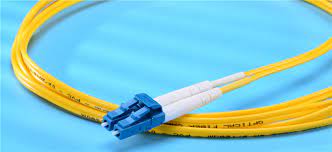In the world of networking and telecommunications, the demand for high-speed and reliable data transmission has led to the widespread use of fiber optics. Fiber patch cables play a crucial role in establishing these connections, and among the various connectors available, the CS connector stands out. In this beginner’s guide, we will unravel the mysteries surrounding the CS connector, exploring its features, applications, and why it has become a preferred choice in the realm of fiber optics.
Understanding Fiber Patch Cables:
Fiber patch cables, also known as fiber optic patch cords or jumper cables, are used to transmit data signals between devices in a network. They consist of a core made of glass or plastic fibers that carry light signals, surrounded by a protective layer called cladding. The entire structure is encased in a protective outer layer, ensuring durability and protection from external factors.
Types of Fiber Patch Cable Connectors:
Various connectors are used in fiber patch cables to facilitate the connection between different network components. Some common connector types include LC, SC, ST, and MTP/MPO. Each connector type has its unique characteristics and use cases, catering to different network requirements.
Introduction to the CS Connector:
The CS (Subscriber Connector) connector is a type of fiber optic connector that has gained popularity for its compact design and versatile applications. Developed by Senko Advanced Components, the CS connector is similar in size to the standard SC connector but offers enhanced performance and flexibility.
Key Features of the CS Connector:
Compact Size:
The CS connector is designed to be compact, making it suitable for high-density environments where space is a premium. Its small form factor allows for efficient use of space in data centers and telecommunications equipment.
Push-Pull Mechanism:
One distinctive feature of the CS connector is its push-pull mechanism. This design facilitates easy insertion and removal of the connector, reducing the risk of damage during installation or maintenance. The push-pull mechanism also ensures a secure and stable connection.
Low Insertion Loss:
Insertion loss refers to the amount of light lost when the signal passes through the connector. The CS connector is engineered to minimize insertion loss, ensuring efficient and reliable data transmission.
High Return Loss:
Return loss is the amount of light reflected back toward the source. The CS connector boasts a high return loss, indicating minimal signal reflection. This characteristic contributes to the overall signal integrity and quality of the connection.
Versatility:
The CS connector is versatile and compatible with various fiber types, including single-mode and multimode fibers. This adaptability makes it suitable for a wide range of applications, from local area networks (LANs) to long-distance telecommunications networks.
Applications of the CS Connector:
Data Centers:
The compact size and high-density capabilities of the CS connector make it well-suited for use in data centers, where efficient space utilization is critical. It is commonly employed to connect servers, switches, and other networking equipment.
Telecommunications Networks:
CS connectors find extensive use in telecommunications networks for both short and long-distance connections. Their low insertion loss and high return loss contribute to the overall performance of these networks.
Enterprise Networks:
In enterprise settings, CS connectors are utilized to establish connections within office buildings, connecting network devices such as computers, printers, and routers.
Fiber to the Home (FTTH):
As fiber optics extend to residential areas, CS connectors play a role in FTTH deployments. Their compact design and performance characteristics make them suitable for connecting fiber optic cables in home networks.
Industrial Applications:
In industrial environments where reliability and performance are crucial, CS connectors are used to ensure stable connections for critical systems.
The CS connector, with its compact design, push-pull mechanism, and high-performance characteristics, has emerged as a reliable and versatile choice in the realm of fiber optics. Understanding its features and applications is essential for those venturing into the world of fiber patch cables and optical connectivity. Whether in data centers, telecommunications networks, or enterprise settings, the CS connector continues to play a pivotal role in enabling efficient and high-speed data transmission. As technology advances, the CS connector stands as a testament to the ongoing innovation in the field of fiber optics, providing solutions for the evolving needs of modern connectivity.
Contact Linden Photonics to get a quote or Call Us at (978) 392-7985

